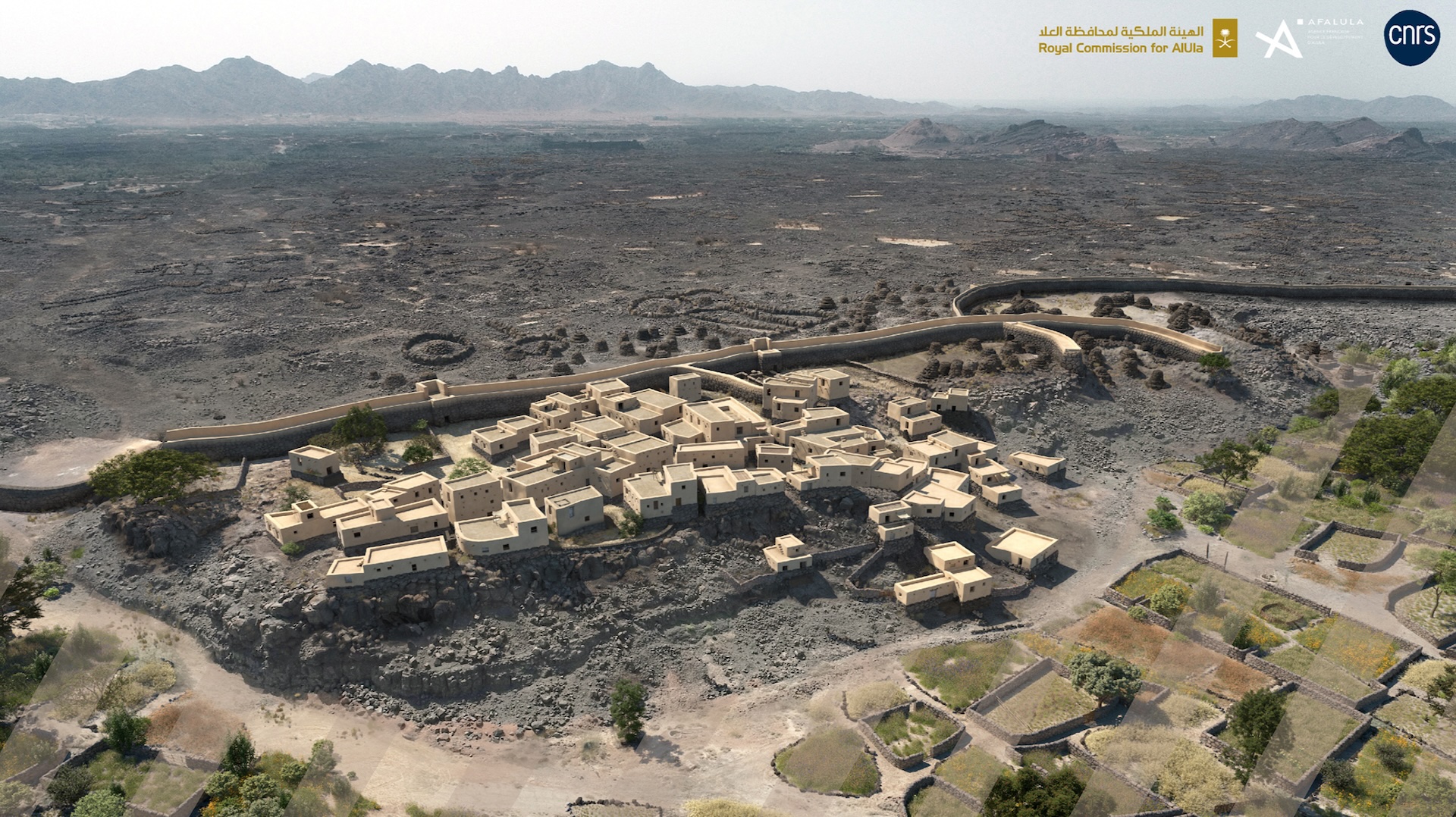
A small 4,400-year-old town in the Khaybar Oasis of Saudi Arabia hints that Bronze Age people in this region were slow to urbanize, unlike their contemporaries in Egypt and Mesopotamia, a new study finds.
Archaeologists discovered the site near the city of Al-'Ula in the Hejaz region of western Saudi Arabia and called it "al-Natah." The settlement covered about 3.7 acres (1.5 hectares), "including a central district and nearby residential district surrounded by protective ramparts," the researchers said in a statement. But the town, which was occupied starting around 2400 B.C., was small, with a population of only around 500 people, the team noted in a study, published Wednesday (Oct. 30) in the journal PLOS One.
The residential area had a large amount of pottery and grinding stones, as well as the remains of at least 50 dwellings that may have been made of earthen materials. The central area had two buildings that may have been used as administrative areas, the team wrote in the paper. In the western part of the central area, a necropolis was found. It has large and high circular tombs that archaeologists call "stepped tower tombs."
No examples of writing have been found so far at the site, study lead author Guillaume Charloux, an archaeologist at the French National Center for Scientific Research (CNRS), told Live Science in an email. Researchers have unearthed only a few traces of cereals, but based on finds at other sites it's likely that al-Natah's people grew crops near the site, Charloux said.
The town and its nearby areas were surrounded by a 9-mile-long (14.5 kilometers) wall, which would have provided defense from raids carried out by nomads, the team wrote in an earlier paper published in the Journal of Archaeological Science: Reports.
Related: Remains of hundreds of 7,000-year-old 'standing stone circles' discovered in Saudi Arabia
The town was abandoned sometime between 1500 and 1300 B.C., but researchers aren't sure why this happened. "It's a pertinent question that I can't really answer at the moment," Charloux said, noting that "we have very few clues about the last phase of occupation."
Slow urbanization
At the time the town was inhabited, cities were flourishing in Mesopotamia, Egypt and the eastern Mediterranean. Research from al-Natah and other sites indicates that urbanization on the Arabian Peninsula moved at a slower pace.
"Settlements in northern Arabia were in a transitional stage of urbanization during the third to second millennium [B.C.]," the researchers said in the statement. They called this phase "low urbanization," describing it as a transitional stage between pastoralism, in which nomadic people follow grazing lands for livestock, and complex urban settlements.
"While urbanization began in Mesopotamia and Egypt in the 4th millennium
B.C., our study tends to show that social complexity increased late in north-western Arabia," Charloux said, noting that urbanization didn't begin on the peninsula until the second half of the third millennium B.C., when some groups on the Arabian peninsula adopted a sedentary lifestyle and started using agriculture on larger scales. People in Egypt and Mesopotamia adopted sedentary lifestyles in earlier times.
Compared to the large Bronze Age cities in Mesopotamia and Egypt, settlements in Saudi Arabia tended to be smaller. "These were small towns connected to networks of monumental ramparts surrounding the large local oases," Charloux said.
Juan Manuel Tebes, the director of the Center of Studies of Ancient Near Eastern History at the Catholic University of Argentina, praised the research.
"The archaeological project at Khaybar is a most significant study that follows and expands the conclusions of excavations and surveys that have been carried out in north-west Saudi Arabia during the last 20 years," Tebes, who was not involved in the study, told Live Science in an email.
He noted that other projects in the region, such as the Saudi-German expedition at the city of Tayma and the Saudi-Austrian expedition at Qurayyah, have also provided valuable information about the region's archaeology. For instance, excavations at Tayma have revealed thousands of years of occupation and include remains that date to when a Babylonian king named Nabonidus (reigned 556 to 539 B.C.) lived in the area.
Robert Andrew Carter, a senior archaeology academic and fieldwork development specialist at Qatar Museums who was not involved in the study, also commended the team's work. "We only have a sketchy understanding of the Bronze Age and the origins of urbanism in the [Hejez area of western Saudi Arabia] and this study goes a long way in providing primary data, and improving our theoretical understanding," Carter told Live Science in an email.







